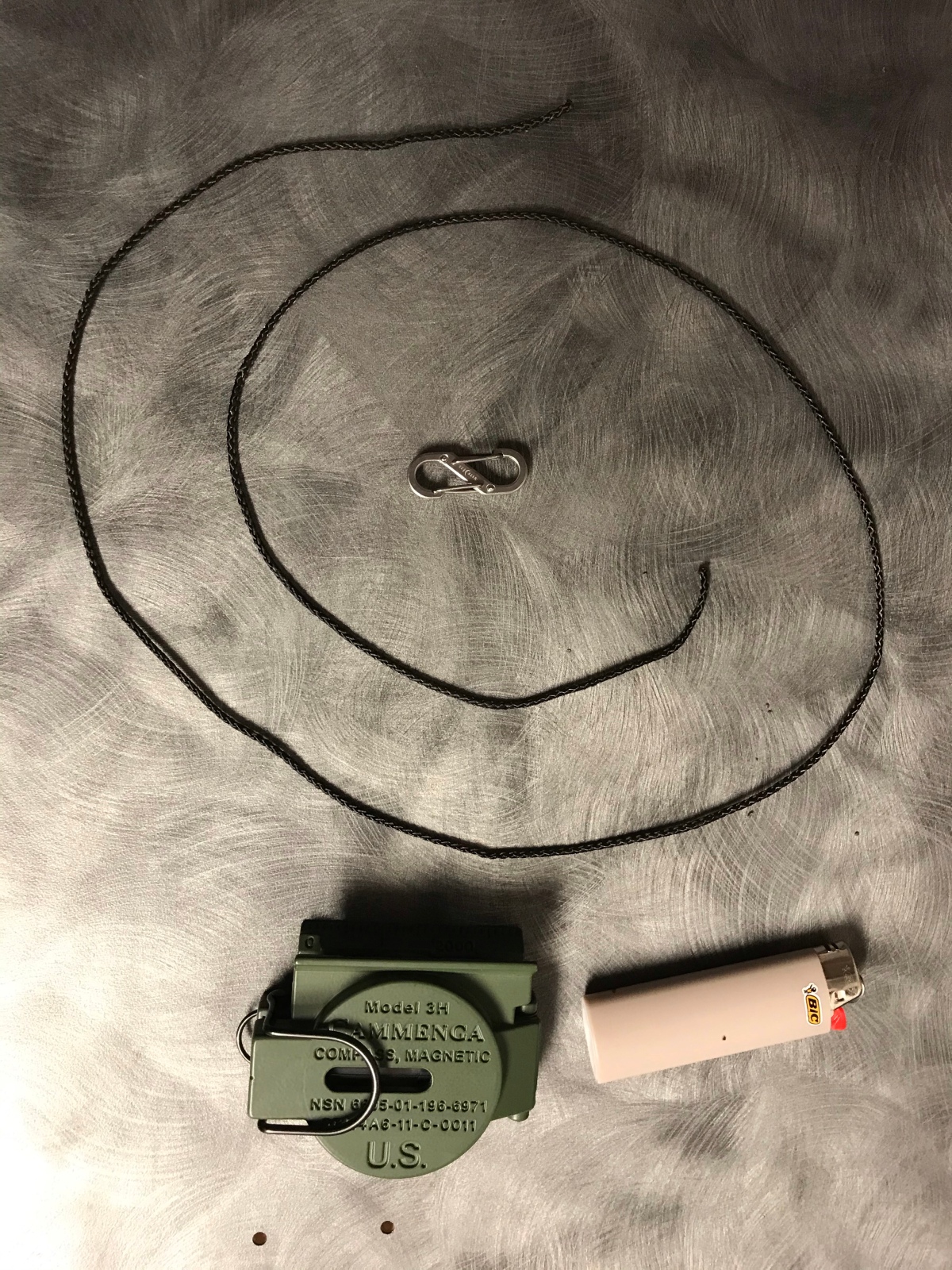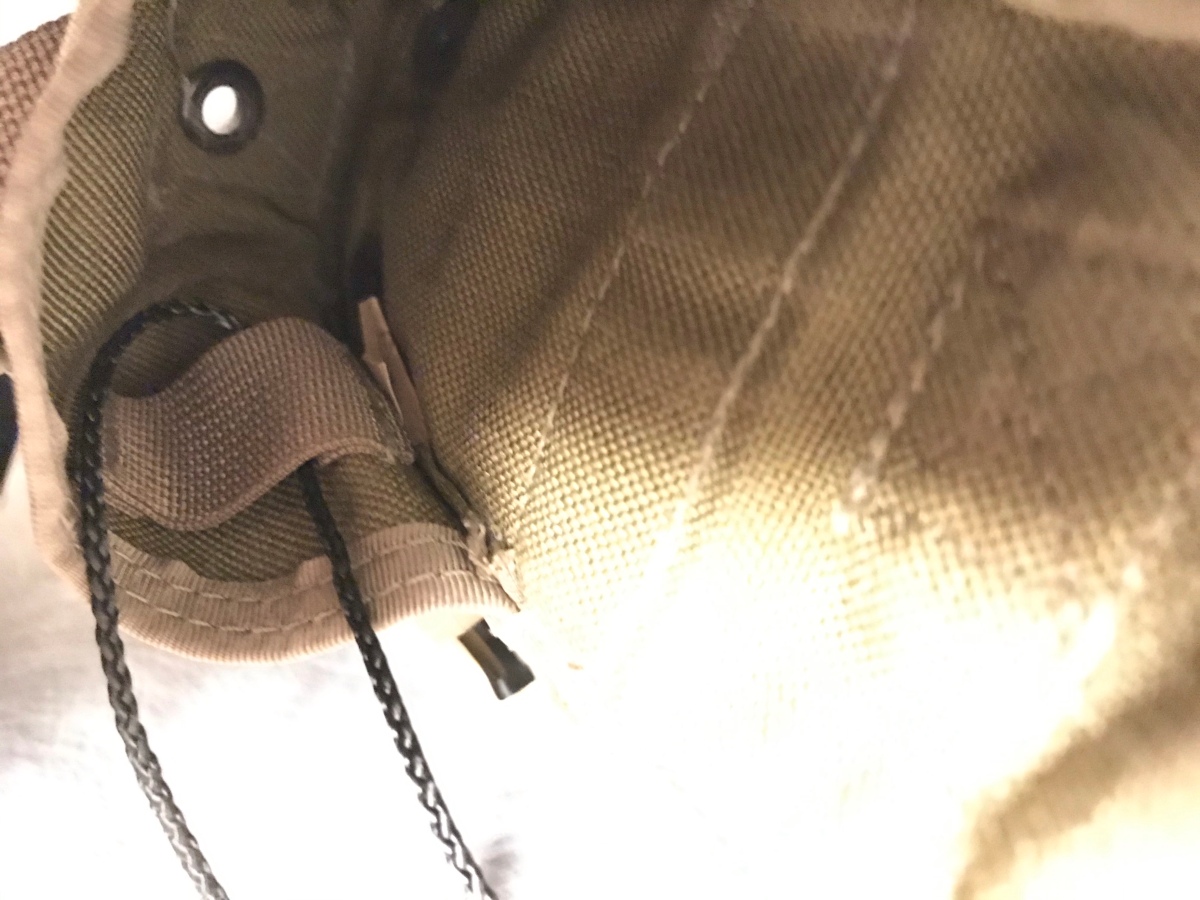Badlands Fieldcraft: Junk On The Bunk: 5 minute project – Dummy cord essential equipment
Originally published on Badlands Fieldcraft. He’s got an excellent course coming up as well– training is how we win. -NCS
For those who may be unfamiliar with the term “dummy cord” it just means to tie your equipment down. As your hiking along sometimes things can come loose and fall out of pockets or pouches and having a secondary means of retaining an item is a smart idea, especially if that item is critical to you accomplishing your goals or returning alive.
I was first introduced to the concept as a young Marine and I personally thought I was “too cool” for dummy cords, since only dummies must need them, right? WRONG! Only dummies don’t use them! Ask me how I found that one out…
I’ve since seen many occasions where dummy cords have either saved the day, or could have, and I would much rather hold onto my stuff. So I’d like to share some quick tips on a good method I’ve been using for dummy cording.
To start off with, you’re going to want a piece of strong cordage long enough to allow you to use your item, but not any longer. My go to cordage is #36 bank line. Give yourself an extra foot or so, it’s easier to cut the extra off then to add on.

An optional piece of equipment but one that I like is the little S-Biner from NiteIze. These are actually sold as a set for managing keys at hardware stores, but they work good for having a quick detach on your gear too.
Your also going to want a lighter to melt your cordage ends with.
Start off with tying overhand knots close to each end of your cordage.

Then tie Bowline knots on each end as well, keeping the tag end with the overhand knot short. Make the Bowline loop big enough to pass the S-biner through.

Next loop the cordage around anything on your gear that is solid. In my example I’m using the internal strap in this grenade pouch, but molle webbing, a belt loop or any other solid point will work.

Now just pass one Bowline through the other and snug it tight against the mounting point and hook the S-biner into the free Bowline then into the equipment.

Now you’re not a dummy anymore since you can now dummy cord your gear!

Share This Story, Choose Your Platform!
7 Comments
Comments are closed.



































5
Once in the early 80s we did a daytime “rubber duck” off the Virginia Capes. This involves a static-line C-130 drop with a 13′ fully inflated and loaded zodiac on a special pallet with a big cargo chute on top of it all. A static-line drogue chute is supposed to pull out the cargo chute, but it didn’t. We followed it out the ramp and watched it fly straight into the water below us, and then we landed around it in the water with our own individual parachutes. The drogue at least stabilized the zodiac so that it landed flat. The impact of hitting the water was severe enough to split the2″ thick plywood transom down the middle from top to bottom like a karate chop, and the plywood bottom of the boat was gone.
Amazingly, the side and front tubes did not burst. So we had a useless zodiac, but something to sit on (if it had been a real-world mission and not training). Yet all of our rifles, radios, the 35HP outboard etc (it’s packed on the pallet, not mounted on the transom for the drop) were all hanging straight below the destroyed but still inflated zodiac by their 550# paracord “lanyards,” which was our term for dummy cords. We didn’t lose one item of importance. Everything was hooked to zodiac D-Rings by carabiners or otherwise tied in some way. We didn’t lose a thing, and you all know what a hassle is when weapons and other “serial number” gear is lost.
Tie downs, tie downs, tie downs. ;)
A buddy of mine had a squad member who lost an mp5 off the Florida coast for failure to use dummy cord. Never to be seen again.
Under the right or wrong circumstances, cords can also break. I had an m16 ripped off my body on a MTCE jump into Panama. Lucky for me, someone found it on the drop zone and took it to parachute recovery point, where I reclaimed it undamaged.
None the less, dummy cords are as essential as your weapon. More aptly named smart guy cords.
Lost an MP5 in a boating accident? Sounds fishy in a familiar “I don’t know how it could happen” kinda way.
No it was a for real military zodiac mishap. Matt’s story is what reminded me of it.
As a builder, I learned long ago to use lanyards for tools. Also OSHA required when working at heights – imagine what a hammer can do to your buddy’s head or shoulder when dropped from a roof. I use one when working on a dock/pier/boat for just about every tool.